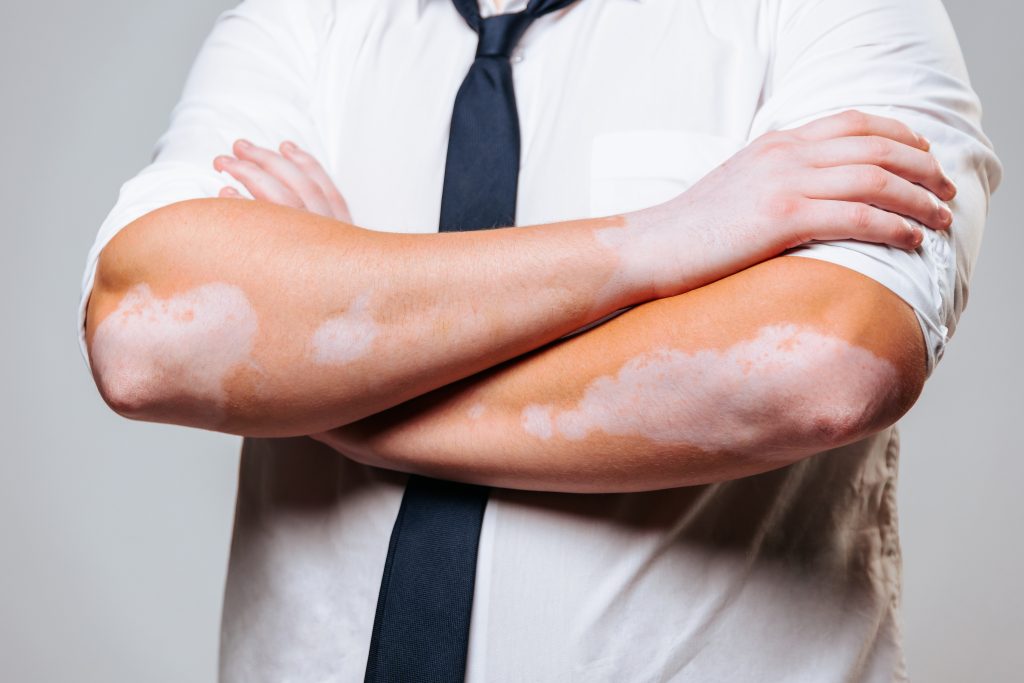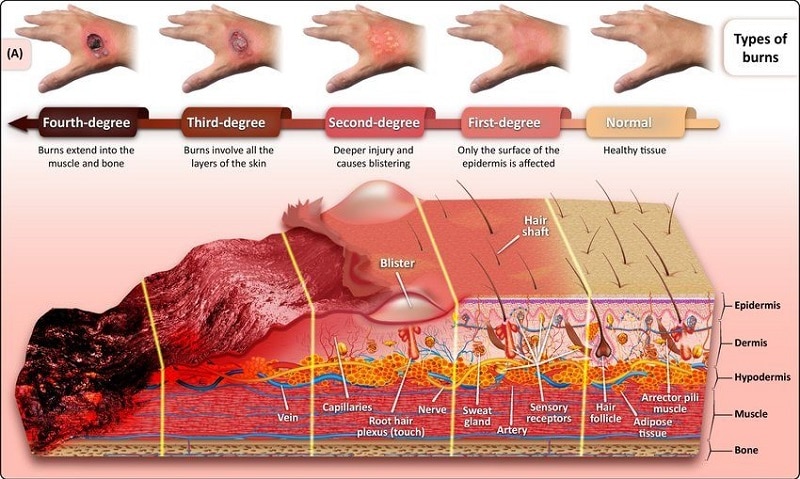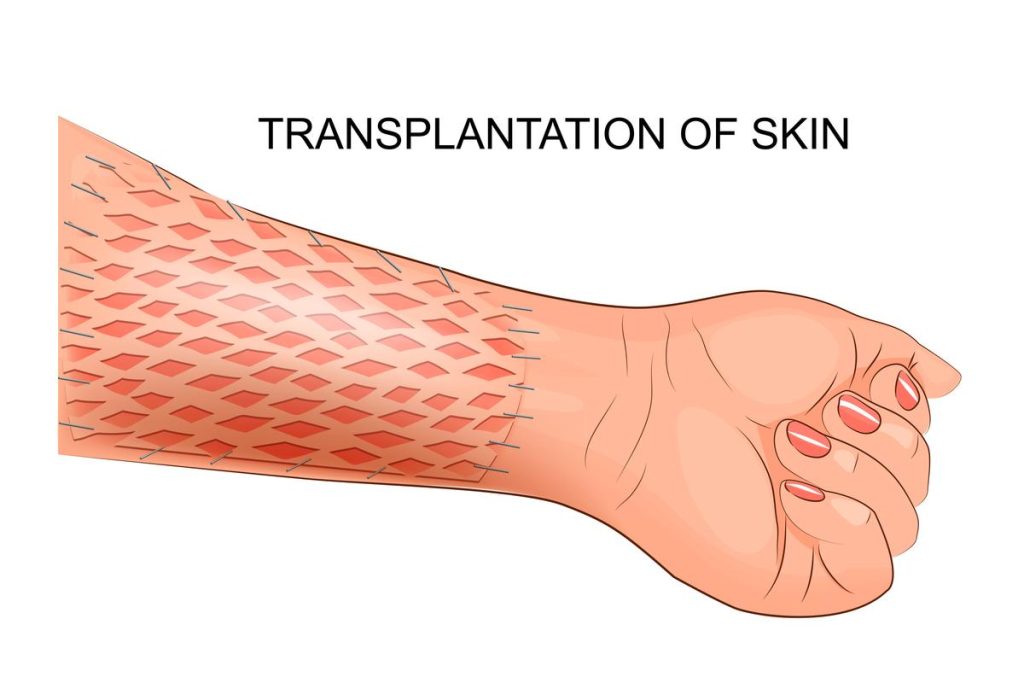From Scar to Second Skin: How Skin Grafts Restore and Rebuild
Skin grafting is a medical operation in which physicians take away intact skin from a certain part of the body and transfer it to a different location.

The purpose of this is to replace or conceal damaged or absent skin. Skin can become damaged or lost from various causes including burns, injuries, illness, or infection. In some cases, doctors may recommend a skin graft procedure after surgery to remove skin cancer.
What is a skin graft?
Usually, this process is performed while you are under general anesthesia, ensuring that you are completely unconscious and without any feeling of pain.
The location where healthy skin is taken from your body is referred to as the donor site. Generally, people who undergo a skin graft procedure are given a split-thickness skin graft, where the top two layers of skin (epidermis) and the layer beneath it (dermis) are collected from the donor site.
The donor can be chosen from any part of the body, usually a hidden area like the buttock or inner thigh that is not easily noticeable when wearing clothes.
Carefully apply the skin graft to the area that needs to be covered. Use a padded dressing or stitches to keep it in place. The area where the skin is taken from is also covered with a clean dressing for a few days.
People who have suffered more tissue loss might need a full skin graft, where the whole thickness of skin is taken from the donor area instead of just the outer layers.
A full-thickness skin graft is a surgical procedure that is more intricate in nature. Usual locations from where skin is sourced for this type of graft include the chest wall, neck, back, or abdominal wall.
Why are skin grafts done?

A skin graft is employed to provide coverage for an area of the body where the skin has been lost. This procedure is typically performed in situations where the skin loss has occurred for diverse reasons.
Infection
Venous ulcers, also known as varicose ulcers.
Bedsores, also known as pressure ulcers,
Diabetic ulcers
A surgical operation is carried out to remove cancer, such as skin or breast cancer.
Contracture is a condition where the skin becomes extremely tight as it heals, causing a limitation in the movement of joints.
Nipple and areola reconstruction
Vitiligo is a condition characterized by the loss of natural color in certain patches of the skin.
Trauma
Types of skin grafts
There are two main types of skin grafts: split-thickness grafts, which only involve a part of the skin’s thickness, and full-thickness grafts, which involve the entire thickness of the skin.

Split-thickness grafts
A split-thickness graft involves taking off the top layer of the skin, known as the epidermis, and a part of the layer underneath called the dermis.
The layers are removed by the surgeon from the area where the healthy skin is located, which is known as the donor site. Typically, split-thickness skin grafts are obtained from the front or outer portion of the thigh, abdomen, buttocks, or back.
Surgeons use split-thickness grafts to cover large areas of damaged skin.
The transplants are frequently fragile and typically possess a shiny or smooth surface. They might also seem to be a lighter shade in contrast to the nearby skin.
Children who undergo split-thickness grafts may need additional grafts in the future because their skin does not grow as efficiently as skin that has not undergone grafting.
Full-thickness grafts
During a full-thickness graft, doctors extract the epidermis and dermis from the donor site, which includes healthy skin from regions like the abdomen, groin, forearm, or above the collarbone.
Usually, the doctor sutures or staples the area where the skin is taken from to create smaller sections called grafts.
To efficiently address minor injuries in prominent areas such as the face, doctors often employ full-thickness grafts. Unlike split-thickness grafts, these grafts seamlessly blend with the surrounding skin, leading to an improved aesthetic outcome.
Composite graft
Doctors utilize composite grafts to repair damages to body parts like the nose, fingertips, and ears, by relocating skin and other pliable tissues such as cartilage.
What to Expect on the Day of Surgery
Before Surgery
In preparation for your skin graft surgery, your healthcare provider might arrange for it to be done several weeks in advance. They may request that you stop taking specific medications such as aspirin, Coumadin, or Jantoven (warfarin) since these can interfere with proper blood clotting. It is essential to inform your healthcare provider in advance about any prescription or over-the-counter medications you are presently taking.
What happens during skin graft surgery?

When you are in a hospital, you may receive skin graft surgery. Usually, this procedure is done when you are completely unconscious with general anesthesia, but smaller grafts can be done with local anesthesia. The surgeon will make incisions and remove healthy skin from a donor area. The specific method used by your healthcare provider will determine the location of the healthy skin taken.
- Abdomen (belly).
- Back or chest.
- Bottom or groin area.
- The region of the body that corresponds to the collarbone.
- Forearm.
- Inner thigh, outer thigh, or hip.
Before transplanting the pristine skin, your healthcare provider may pierce it with tiny holes or make several tiny incisions that intersect each other, which is called meshing. This causes the healthy skin to look like a fishnet. This technique allows your provider to increase the area that the skin graft can cover and helps with the healing process after surgery in the affected area.
The medical expert will replace the damaged or missing skin with healthy skin and secure it in place with stitches or staples. They will then apply a bandage to the area. Both the spot where the healthy skin was taken from (donor site) and the spot where it was placed (graft site) will recover after the procedure. However, it is probable that the graft site will require more time to heal.
After the Procedure
The recovery process is faster for split-thickness skin grafts, but for full-thickness grafts, it will take longer to heal. If you have had a full-thickness graft, it might be essential for you to stay in the hospital while you recover.
After being discharged from the hospital, it’s important to follow the given instructions on how to appropriately care for your skin graft.
Please seek advice from your healthcare provider regarding the appropriate care for the dressing. This includes avoiding water contact and wearing it for a duration of 1 to 2 weeks.
It is important to protect the graft for a period of 3 to 4 weeks to avoid any potential harm or damage. This includes avoiding any impact or activities that could potentially cause injury or loosen the graft.
It is recommended by your surgeon to undergo physical therapy.
Recovery
The length of time needed to recover from a skin graft surgery varies depending on the complexity of the procedure. If a split-thickness graft is done, the healing process may be completed in just a few days. However, if a full-thickness graft is performed, it will take longer to heal and may require a hospital stay of one or two weeks.
The typical amount of time it takes for the donor site to heal varies from a couple of days to a week. Your healthcare provider will most likely give you a prescription for pain medication in order to alleviate any discomfort.
In an allogeneic transplant, patients are given medication to suppress their immune system and avoid rejection of the received skin. These medications reduce the activity of their immune system, which makes them prone to infections and could potentially harm other organs such as the kidneys.
After you are discharged from the hospital, you will need to wear a bandage for a period of one to two weeks. It is crucial to discuss with your healthcare provider how to properly care for and protect the dressing to keep it dry. Furthermore, you should take precautions for three to four weeks to keep the graft safe from any harm. This includes avoiding activities or exercises that may cause injury or strain to the graft, as well as preventing any impacts to the affected areas.
If your surgeon observes that the graft you received is hindering the complete range of motion in a limb or joint, they may suggest undergoing physical therapy.
Having skin graft in Turkey?
The patient must carefully search for an appropriate service provider, have information, and ask about the surgeon and his experience. And also, checking examples of his previous operations.
Accordingly, we encourage you to contact the Health & Beauty to obtain all information and details, and to ensure that you have your operation done by the hands of the most skilled doctors working in this specialty.
